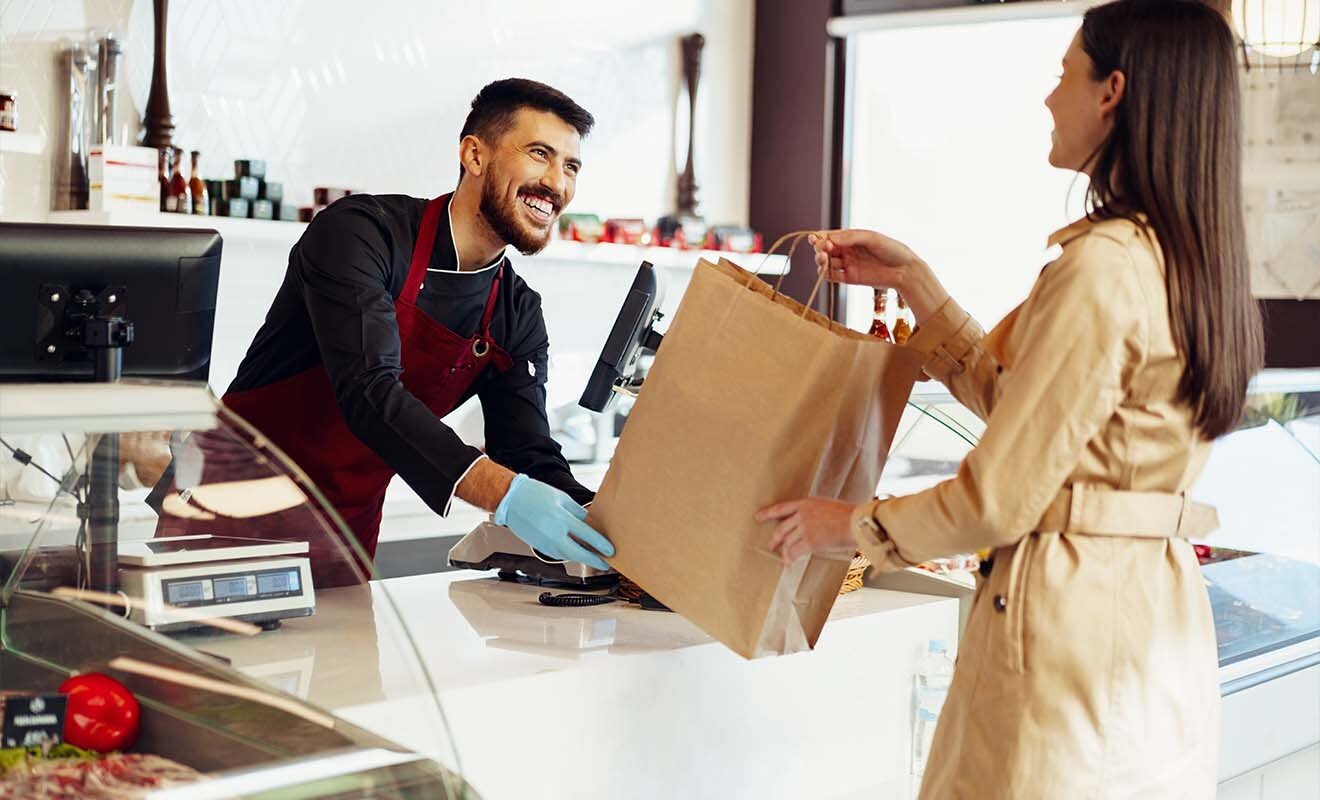Webinar #3 : The boom in new collaborative delivery methods

In this particular period for commerce and to meet consumer demands, we are witnessing a rapid rise in new forms of consumption, particularly that of collaborative delivery. After car-sharing or car-pooling, collaborative delivery is one of these new, more responsible and more economical modes of consumption that consumers and brands are keen on.
55% of consumers now say they are prepared to make deliveries for their neighbours*.
In the form of shared parcel relays between neighbours or deliveries between private individuals, these new so-called "solidarity" models operate in different forms and every day new players innovate and emerge on the market.
What are the current new collaborative models and how can they be implemented?
What are the challenges for brands and consumers faced with the rise of the collaborative model?
What is the impact for the whole ecosystem and what are the limits and risks for this new model?
Woop, along with a panel of experts, have deciphered for you the boom in collaborative delivery.
Some figures
- 55% of consumers would accept deliveries to people in their neighbourhood*.
- For 64% of them, the person making the delivery is not an important criterion*.
- 48% of the private individuals surveyed said they would be willing to make collaborative deliveries, with the motivation of saving travel costs (61%), providing a service (22%) or earning money (17%).
Our Speakers:
- Benoit Onnée, cooperator within the Système U central organisation and manager of the Super U in Rezé, which represents 1600 shops in France. Système U currently has 850 drives.
- Philippe Vettese, innovation leader at Cultura, whose current objective is to explore and test new innovative experiences for customers, as well as new business models, and to understand what the shop of tomorrow could be.
- Johan Ricaut, co-founder of Shopopop, which is today the leading platform for home delivery between individuals through food, non-food, or local merchants.
- Romain Barraud, co-founder and CEO of Welco, the leading solution for parcel collection between individuals. Through a community of neighbours, Welco is reinventing the relay point by highlighting the social link and the ecological aspect in the delivery sector.
- Alexis Quesney, Managing Director of Woop, which offers a platform for orchestrating all transport solutions. Woop supports companies in the shipping of their products, regardless of the mode chosen, in order to help its clients fully satisfy their own customers.
- And finally, Yasni Meziane, communications manager at Woop, who is moderating the webinar.
Why collaborative work?
“We wanted to offer our customers the choice of collaboration, by deploying this model in a few shops for a test phase in exploration mode.”
- Philippe Vettese, Cultura
- Meeting a consumer need.
- A model that brings agility and flexibility to delivery.
“It is from a customer need that we have moved towards collaborative delivery.”
- Benoit Onnée, Super U Rezé
- A rise in demand for collaborative delivery is very strong in the food sector.
- Collaborative delivery is easy to set up, and allows for real follow-up on a daily basis.
“We realised that there was a lot at stake in last-mile delivery.”
- Johan Ricaut, Shopopop
- Collaborative is based on daily journeys, creating a real delivery promise.
- Collaborative can be deployed in both rural and urban areas.
“It was our duty to reinvent a traditional relay model.”
- Romain Barraud, Welco
- To offer an alternative to consumers, but also to e-retailers in the recovery of their parcels.
- To complement and optimise the deliveries of our carriers.
Benefits for brands
“We have integrated collaborative transporters to solve an economic equation in food delivery.”
- Alexis Quesney, Woop
- Collaborative delivery covers a wider range of prices, making delivery more appealing to the end consumer
- Collaborative players are the players of tomorrow, this is a crucial innovation for brands
“Collaboration allows us to leave the choice of delivery to the customer.”
- Philippe Vettese, Cultura
- Collaborative delivery complements a classic delivery strategy in order to take into account the different promises made to the consumer.
- It allows for better support for customers, there is more proximity in the collaborative approach and it creates a real local anchor for brands.
Benefits for consumers
"By reinventing the relay point, we offer consumers proximity.”
- Romain Barraud / Welco
- Promise to make it easier to collect your parcel.
- Offer an alternative way to receive your parcel, and avoid the queues at a relay point for example.
"We provide an additional service to the customer, while responding precisely to their needs”
- Alexis Quesney, Woop
- Consumers are looking for an increasingly different delivery experience, which is what collaborative delivery is all about.
- Collaborative delivery is also a new way to create social links.
"Today, Shopopop is the promise of 2-hour delivery anywhere in France.”
- Johan Ricaut, Shopopop
- Collaborative delivery has a much lower ecological impact than traditional delivery.
- We are responding to new territorial challenges, via the promise of delivery anywhere in France.
"As a brand, we have to find alternative solutions to satisfy all our customers.”
- Philippe Vettese, Cultura
- Faced with new consumption, brands must respond for their customers.
- Collaboration, like other innovative solutions, is a way for brands to show their customers that they know how to adapt in all situations.
Perspectives
"It is a source of pride that this new model has emerged.”
- Johan Ricaut, Shopopop
- Continue to increase awareness of this new delivery standard.
- Duplicating the collaborative approach abroad, particularly at European level.
“You don't want to go for a cheap product.”
- Romain Barraud, Welco
- This service must be valued in order to make this model sustainable.
- Develop the deliverability of rural areas.
“There will be a cross-over between collaborative and circular consumption.”
- Philippe Vettese, Cultura
- The collaborative element is becoming increasingly meaningful and consistent in brand positioning.
“The shop still has a long way to go. We have entered the era of omnichannel.”
- Alexis Quesney, Woop
- These collaborative offers are differentiating and complementary to traditional transport offers.
- Collaboration allows customers to be served in a totally relevant way.
Conclusion
Collaboration offers various advantages for brands: proximity, speed, cost, but also for consumers: service, responsibility, flexibility.
Collaborative platforms are now multi-format and increasingly professional. Complementary to a traditional carrier, they increase deliverability and reduce re-delivery operations while covering a large geographical area (rural areas, etc.)
Benoit Onnée from Super U,
Philippe Vettese from Cultura,
Johan Ricaut from Shopopop,
Romain Barraud from Welco,
and Alexis Quesney from Woop
To find out more, read the Shopopop EBOOK on Collaborative Delivery: the last mile issue.
The growth of e-commerce and the health crisis have led the French to turn to home delivery, particularly for food purchases. Discover, in figures, the expectations of your customers and the major challenges posed by last-mile delivery! The guide is available here.

#collaborative
#expertise
#OverToTheExperts
#delivery
*Sources - Etude Sendcloud 2021, FEVAD et Parcellab
Subscribe to our newsletter
Auteur
Team Woop
Read his profileArticles liés
2022/02/04 6min read
Webinar #4: Unified DMS, the solution for efficient and responsible delivery
2022/03/15 6min read








